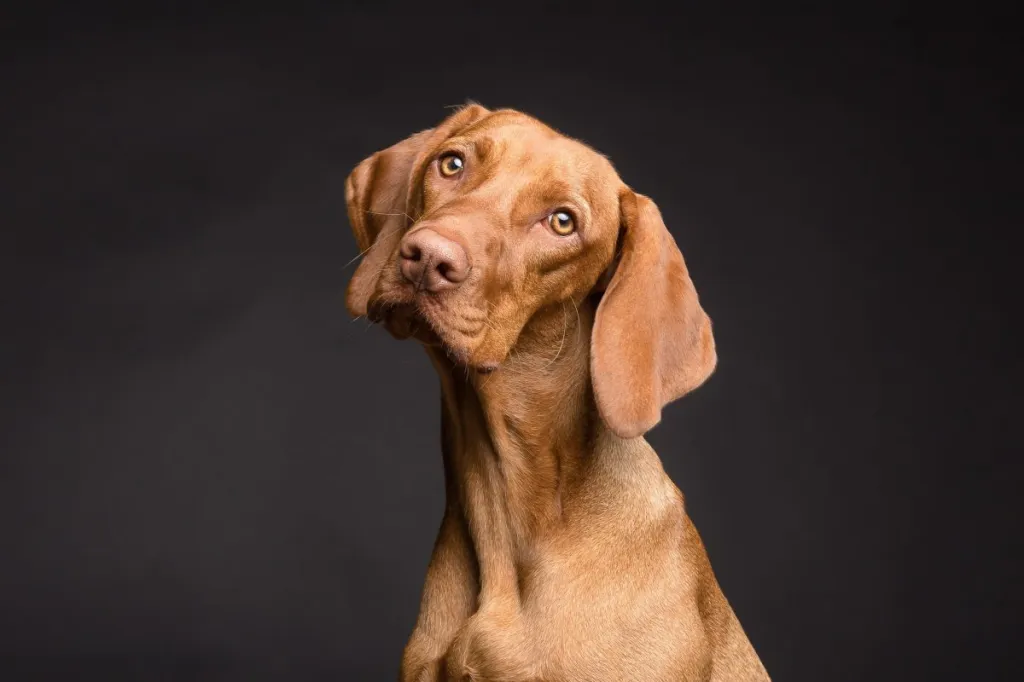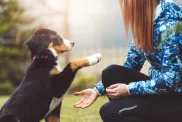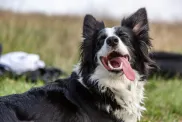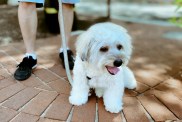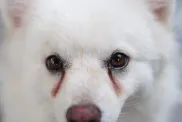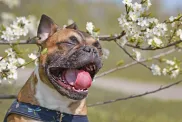Created in Hungary to work as a pointer and retriever, the Vizsla dog breed has an aristocratic bearing. All they really want, though, is to be loved. Although they’re purebred dogs, you may find Vizslas in shelters or in the care of rescue groups.
Vizslas make super companions for active families who can provide them with the exercise and attention they crave. Although these dogs are quite affectionate, they don’t take to apartment living easily. They’d much prefer a large yard to run around and burn off their energy.
See below for a list of all dog breed traits and facts about Vizslas!
Quick Facts
- Origin: Vizslas originated in Hungary and were bred as versatile hunting dogs.
- Size: They are medium-sized dogs, typically weighing between 45 to 65 pounds and standing around 21 to 24 inches tall at the shoulder.
- Appearance: Vizslas have a distinctive rust-colored coat that is short and dense. Their sleek coat gives them an elegant appearance.
- Temperament: Vizslas are known for their friendly and affectionate nature. They form strong bonds with their families and are often referred to as “velcro dogs” due to their desire to be close to their human companions.
- Exercise Needs: These dogs are highly energetic and require regular exercise to keep them physically and mentally stimulated. Activities like jogging, playing fetch, and agility training are great for their active nature.
- Health: Vizslas are generally healthy dogs, but like all breeds, they can be prone to certain health issues such as hip dysplasia, eye conditions, and allergies. Regular veterinary check-ups are important to maintain their well-being.
- Lifespan: The average lifespan of a Vizsla is around 10 to 14 years, although with proper care, some can live longer.
Vizsla Dog Breed Pictures
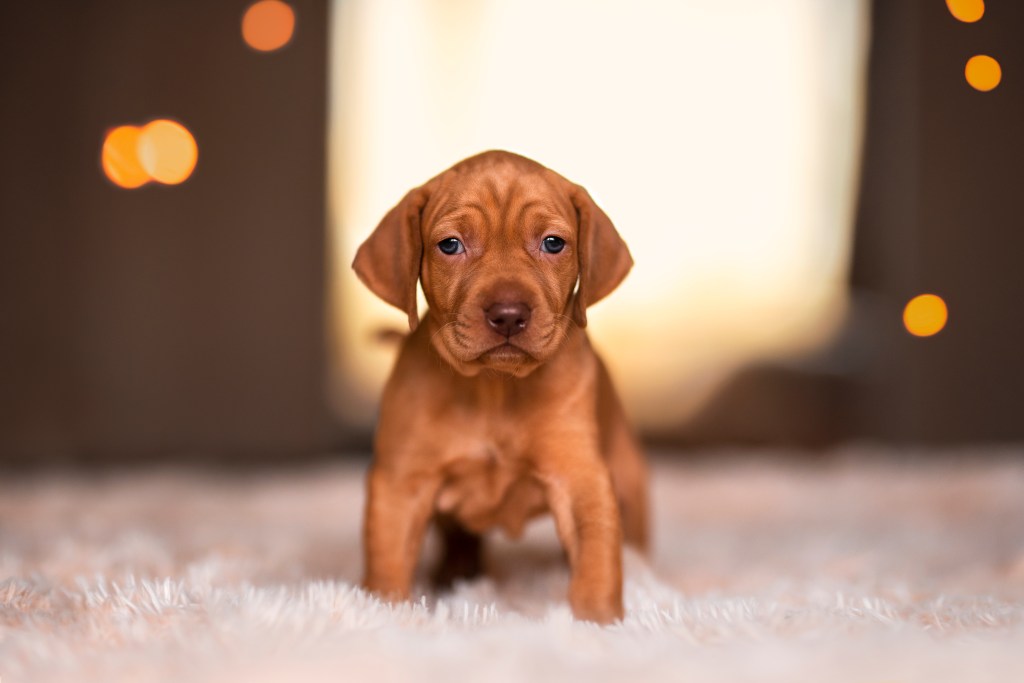
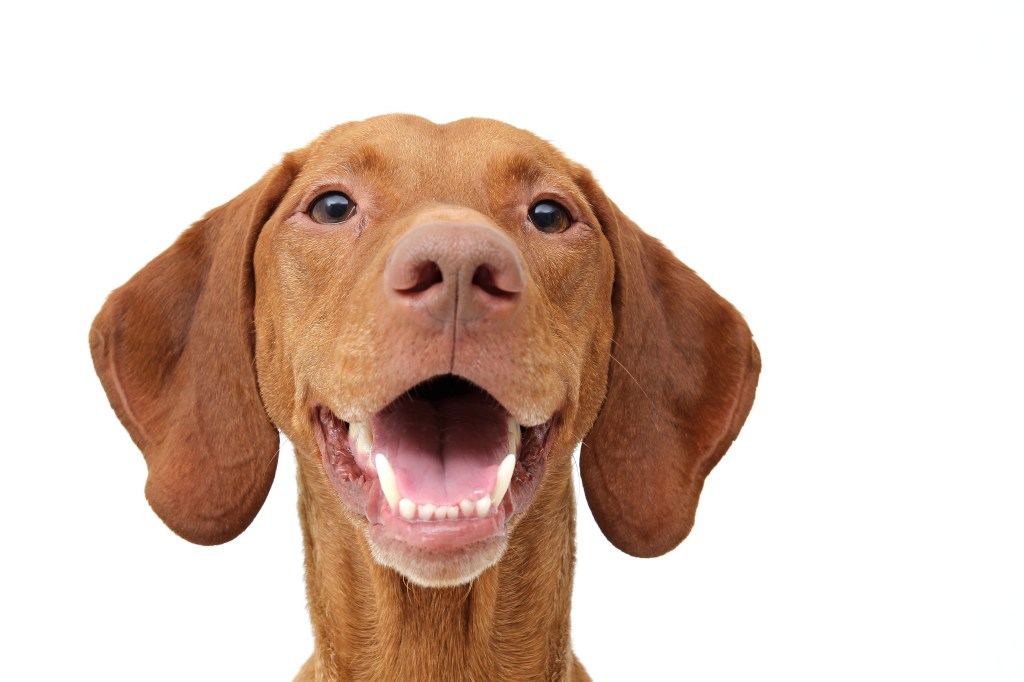
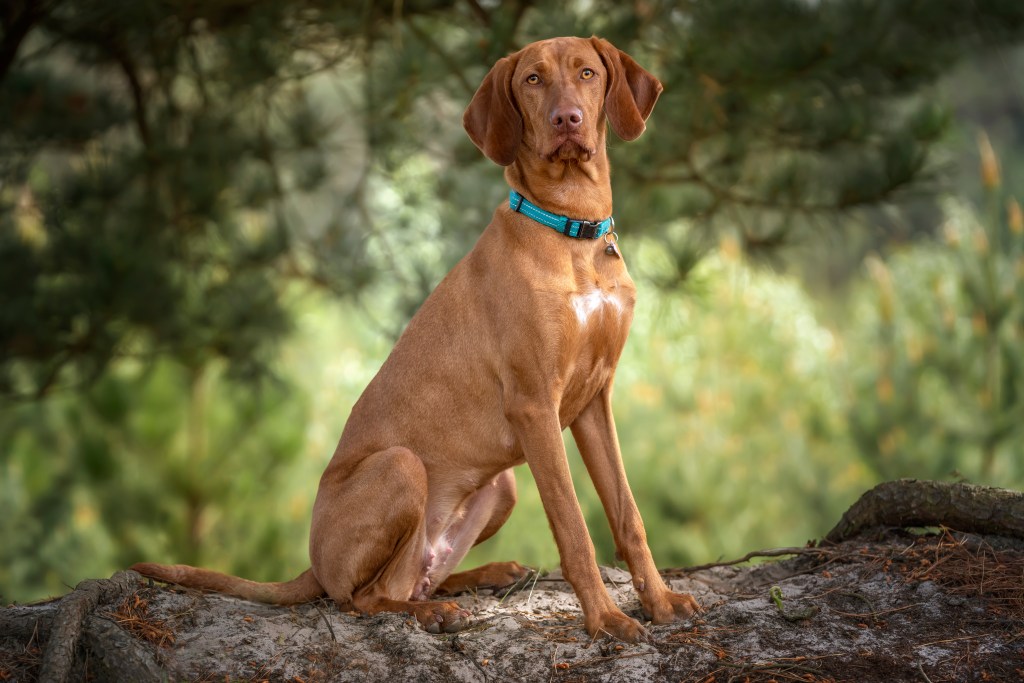
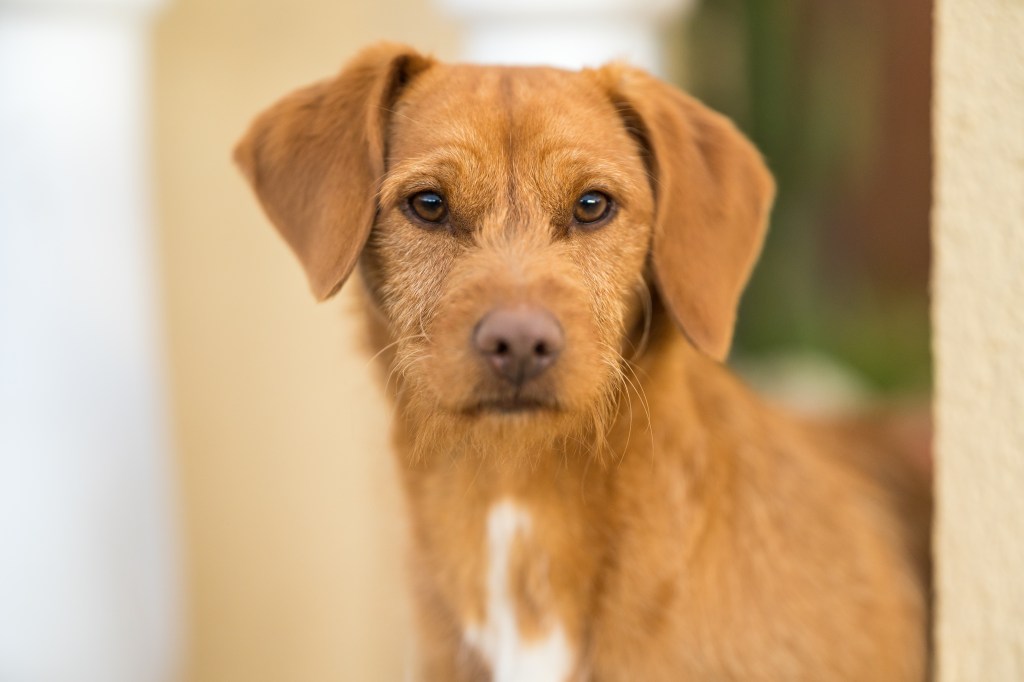
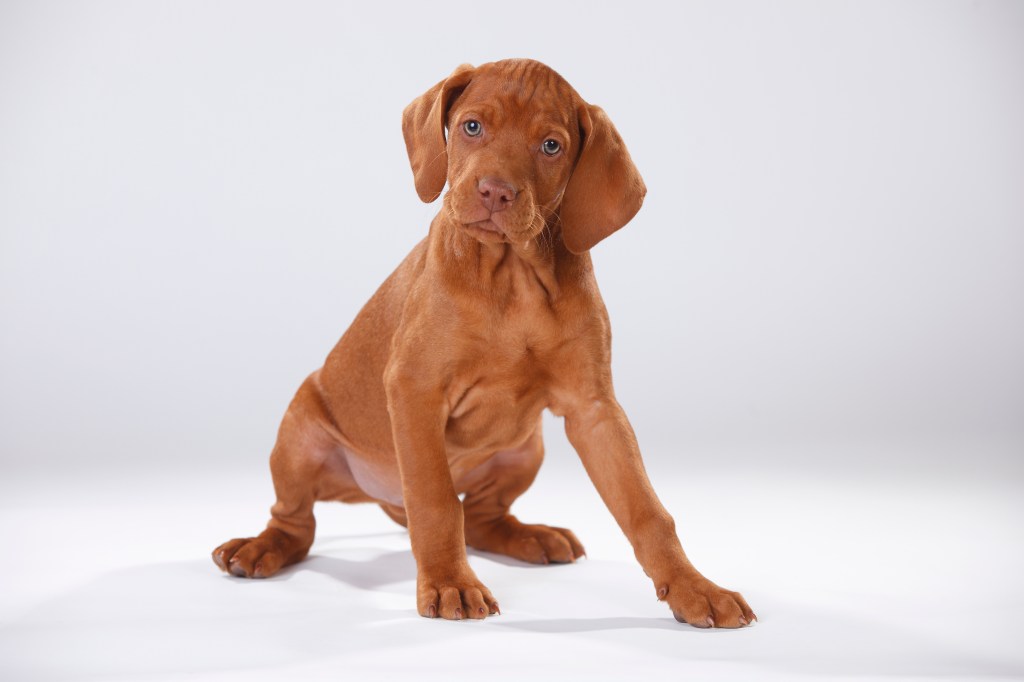
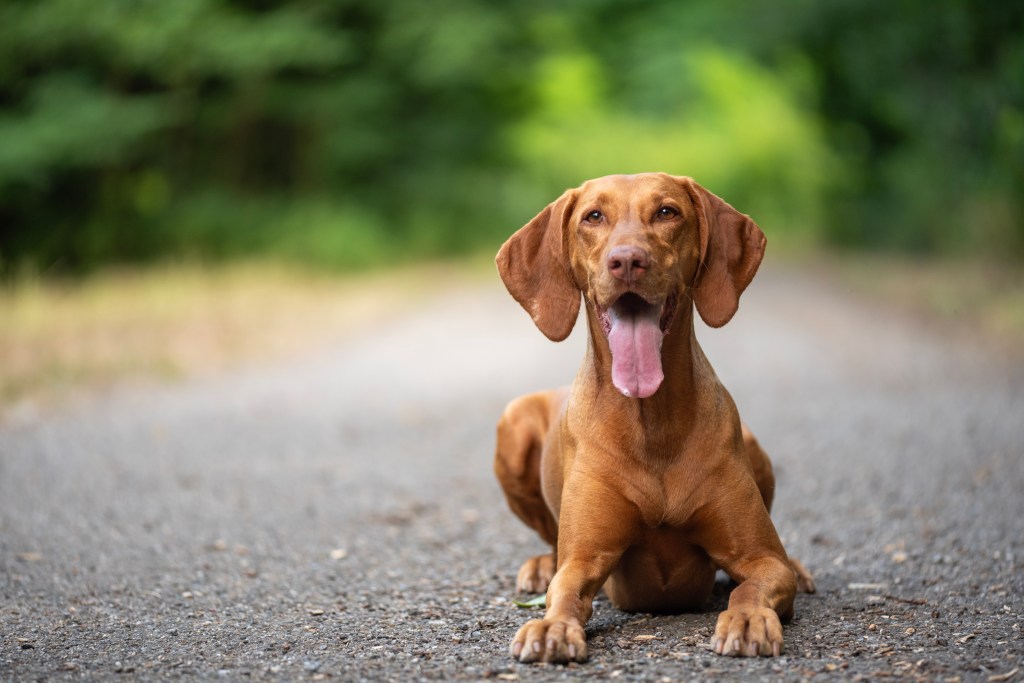
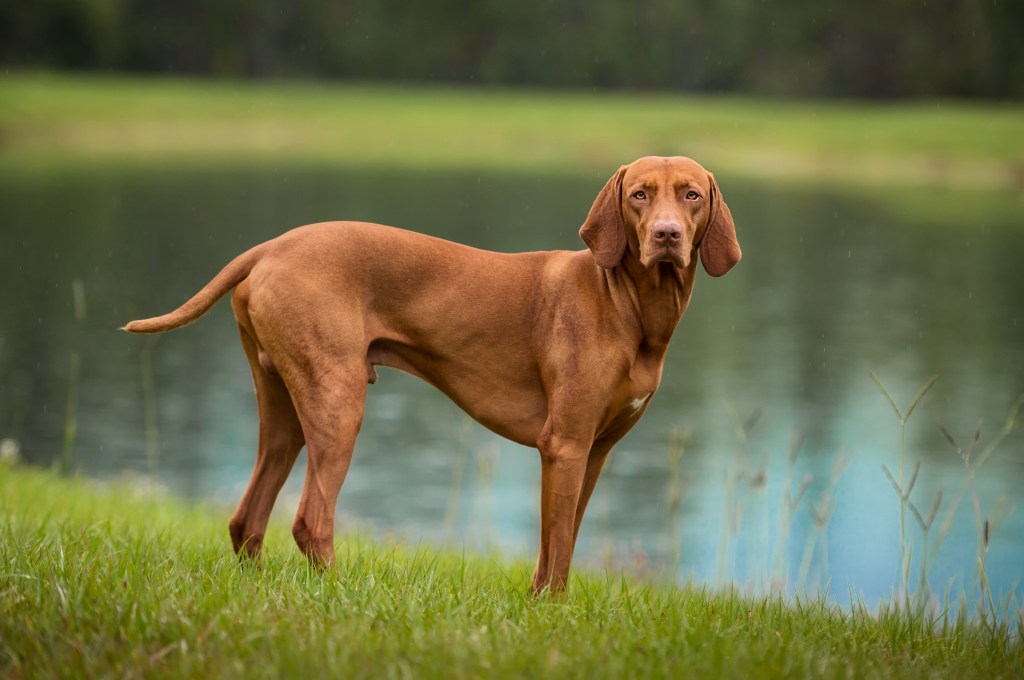
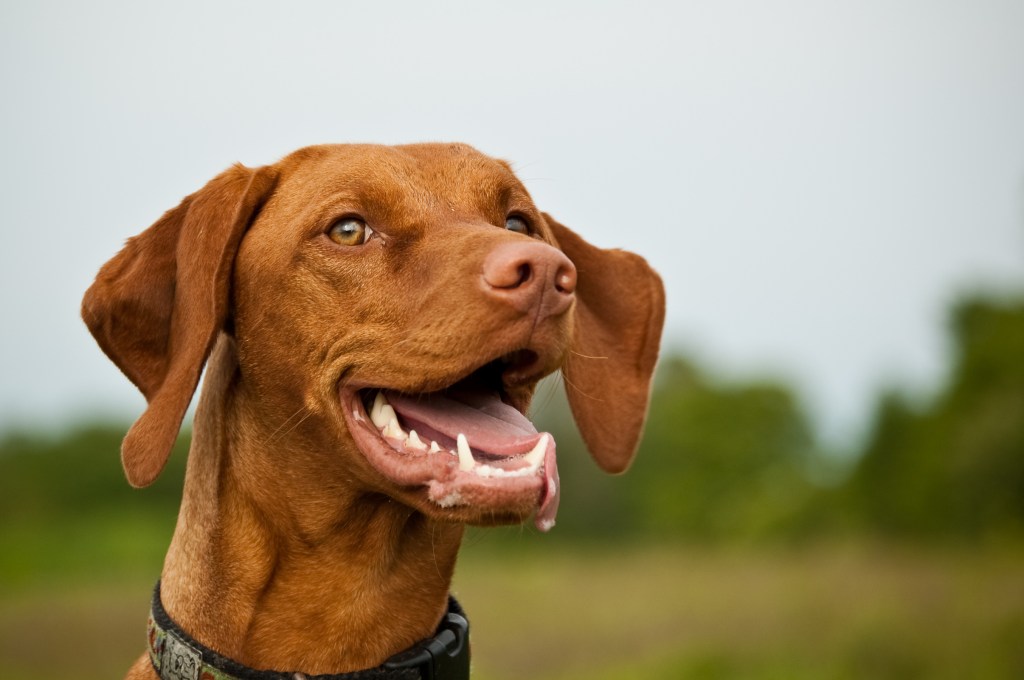
Adaptability
-
Adapts Well To Apartment Living
Looking for the best dog for your apartment? Contrary to popular belief, the suitability of dogs who adapt well to apartment living goes beyond its size. Apartment dwellers have a myriad of dog breeds to choose from as potential companions, with various factors to consider. Some large breeds can adapt well to apartment living and have lower activity levels. Others may require more space and possess higher energy levels. On the other hand, certain small dog breeds with abundant energy can still find contentment with indoor playtime or brisk walks.
However, when selecting a dog that adapts well apartments, it is essential to prioritize your neighbors. Opting for a pet that doesn’t excessively bark and behaves politely when encountering others in shared spaces like is crucial for maintaining a harmonious apartment environment.
In high-rise settings, it’s worth noting that numerous small dogs may exhibit a propensity for high energy and frequent barking. This makes them less suitable for apartment living. Therefore, desirable qualities in an apartment dog encompass being quiet, low-energy, and displaying polite behavior towards other residents.
Factors To Consider When Choosing A Dog For An Apartment
When considering dogs that adapt well to apartments, size alone should not be the sole determinant. Apartment dwellers have a wealth of dog breeds to choose from as potential furry companions. It’s important to remember that the size of your living space is just one factor to consider. While some larger breeds can adapt well to apartment living, with lower, others may require more space and have higher energy levels, making them less suitable for smaller apartments. Conversely, certain small dog breeds with higher energy levels can still thrive in apartments, finding contentment through indoor playtime or brisk walks. However, it is crucial to consider your neighbors’ comfort when selecting a dog. Opt for a pet that doesn’t bark excessively and behaves politely when interacting with others in shared spaces.
Therefore, it’s important to prioritize qualities such as being quiet, low-energy, calm indoors, and exhibiting good manners when living in close proximity to other residents. By considering these factors, you can find a dog that will adapt well to apartment living and create a harmonious living environment for everyone involved.
-
Good For Novice Owners
Some dogs are simply easier than others; they take to training better and are fairly easygoing. They’re also resilient enough to bounce back from your mistakes or inconsistencies.
Dogs who are highly sensitive, independent thinking, or assertive may be harder for a first-time dog parent to manage. You’ll get your best match if you take your dog-owning experience into account as you choose your new pooch.
If you’re new to dog parenting, take a look at 101 Dog Tricks and read up on how to train your dog!
-
Sensitivity Level
Some dogs will let a stern reprimand roll off their backs, while others take even a dirty look to heart. Low-sensitivity dogs, also called “easygoing,” “tolerant,” “resilient,” and even “thick-skinned,” can better handle a noisy, chaotic household, a louder or more assertive owner, and an inconsistent or variable routine. Do you have young kids, throw lots of dinner parties, play in a garage band, or lead a hectic life? Go with a low-sensitivity dog.
-
Tolerates Being Alone
Some breeds bond very closely with their family and are more prone to worry or even panic when left alone by their owner. An anxious dog can be very destructive–barking, whining, chewing, and otherwise causing mayhem. These breeds do best when a family member is home during the day or if you can take the dog to work.
-
Tolerates Cold Weather
Breeds with very short coats and little or no undercoat or body fat, such as Greyhounds, are vulnerable to the cold. Dogs with a low cold tolerance need to live inside in cool climates and should have a jacket or sweater for chilly walks. You can find a great jacket for your dog here!
-
Tolerates Hot Weather
Dogs with thick, double coats are more vulnerable to overheating. So are breeds with short noses, like Bulldogs or Pugs, since they can’t pant as well to cool themselves off. If you want a heat-sensitive breed, your dog will need to stay indoors with you on warm or humid days, and you’ll need to be extra cautious about exercising your dog in the heat.
All-around friendliness
-
Affectionate With Family
When it comes to unconditional love and unwavering loyalty, few animals can rival the affectionate nature of dogs. These remarkable creatures have earned their reputation as man’s best friend, and many breeds are particularly renowned for their love and devotion to their families. With their warm hearts and wagging tails, affectionate family dogs enrich the lives of their owners in countless ways.
One such breed known for its affectionate demeanor is the Golden Retriever. With their gentle temperament and friendly disposition, Golden Retrievers form deep bonds with their families. They eagerly participate in family activities, whether it’s a game of fetch in the yard or cuddling on the couch during a movie night. Their expressive eyes and ever-wagging tails are a testament to the joy they feel in the presence of their loved ones.
Another family-favorite breed is the Labrador Retriever. Renowned for their playful and patient nature, Labradors are excellent companions for children and adults alike. They readily engage in playtime with the kids, showcasing their boundless energy and enthusiasm. But when the day winds down, they seamlessly transition into loving and gentle cuddle buddies, comforting their family members with their warm presence.
Beyond specific breeds, mixed-breed dogs also have a special place in the hearts of families seeking affectionate companions. The shelter dogs, in particular, form deep connections with their adoptive families. They seem to understand the second chance they’ve been given and repay it with endless love and gratitude.
How To Know If A Dog Is Good With Families
The affectionate nature of family dogs extends beyond play and cuddles. Dogs have a remarkable ability to sense their owner’s emotions, offering comfort and support during difficult times. Whether it’s a wagging tail after a long day at work or a sympathetic nuzzle during moments of sadness, they prove time and again that they are attuned to their family’s needs.
It is important to note that not all dogs of the same breed will be equally affectionate. Some dogs may be more independent or aloof, while others may be more clingy or demanding of attention. The best way to find out how affectionate a dog is is to meet them in person and interact with them.
-
Kid-Friendly
Being gentle with children, sturdy enough to handle the heavy-handed pets and hugs they can dish out, and having a blasé attitude toward running, screaming children are all traits that make a kid-friendly dog. You may be surprised by who’s on that list: Fierce-looking Boxers are considered good with children, as are American Staffordshire Terriers (which are considered Pit Bulls). Small, delicate, and potentially snappy dogs such as Chihuahuas aren’t always so family-friendly.
**All dogs are individuals. Our ratings are generalizations, and they’re not a guarantee of how any breed or individual dog will behave. Dogs from any breed can be good with children based on their past experiences, training on how to get along with kids, and personality. No matter what the breed or breed type, all dogs have strong jaws, sharp pointy teeth, and may bite in stressful circumstances. Young children and dogs of any breed should always be supervised by an adult and never left alone together, period.
-
Dog Friendly
Friendliness toward dogs and friendliness toward humans are two completely different things. Some dogs may attack or try to dominate other dogs, even if they’re love-bugs with people; others would rather play than fight; and some will turn tail and run. Breed isn’t the only factor. Dogs who lived with their littermates and mother until at least six to eight weeks of age and who spent lots of time playing with other dogs during puppyhood, are more likely to have good canine social skills.
-
Friendly Toward Strangers
Stranger-friendly dogs will greet guests with wagging tails and nuzzles; others are shy, indifferent, or even aggressive. However, no matter what the breed, a dog who was socialized and exposed to lots of different types, ages, sizes, and shapes of people as a puppy will respond better to strangers as an adult. Remember that even friendly dogs should stay on a good, strong leash like this one in public!
Health And Grooming Needs
-
Amount Of Shedding
If you’re going to share your home with a dog, you’ll need to deal with some level of dog hair on your clothes and in your house. However, shedding does vary greatly among the breeds. Some dogs shed year-round, some “blow” seasonally, some do both, and some shed hardly at all. If you’re a neatnik, you’ll need to either pick a low-shedding breed or relax your standards. To help keep your home a little cleaner, you can find a great de-shedding tool here!
-
Drooling Potential
Drool-prone dogs may drape ropes of slobber on your arm and leave big, wet spots on your clothes when they come over to say hello. If you’ve got a laid-back attitude toward slobber, fine; but if you’re a neatnik, you may want to choose a dog who rates low in the drool department.
-
Easy To Groom
Some breeds are brush-and-go dogs; others require regular bathing, clipping, and other grooming just to stay clean and healthy. Consider whether you have the time and patience for a dog who needs a lot of grooming, or the money to pay someone else to do it.
-
General Health
Due to poor breeding practices, some breeds are prone to certain genetic health problems, such as hip dysplasia. This doesn’t mean that every dog of that breed will develop those diseases; it just means that they’re at an increased risk.
If you’re adopting a puppy, it’s a good idea to find out which genetic illnesses are common to the breed you’re interested in. You may also want to ask if your shelter or rescue has information about the physical health of your potential pup’s parents and other relatives.
-
Potential For Weight Gain
Some breeds have hearty appetites and tend to put on weight easily. As in humans, being overweight can cause health problems in dogs. If you pick a breed that’s prone to packing on pounds, you’ll need to limit treats, make sure they get enough exercise, and measure out their daily food servings into regular meals rather than leaving food out all the time.
Ask your vet about your dog’s diet and what they recommend for feeding your pooch to keep them at a healthy weight. Weight gain can lead to other health issues or worsen problems like arthritis.
-
Size
Get ready to meet the giants of the doggy world! Large dog breeds aren’t just big balls of fluff, they’re like loving, oversized teddy bears on a mission to steal your heart. Need some convincing? Let’s dive into the awesome benefits of owning one!
First things first, these pooches are a living security system! With their impressive size and thunderous barks, they’ll have any would-be intruder running for the hills. Talk about peace of mind! Plus, who needs an alarm when you’ve got a furry giant protecting your castle?
But that’s not all. Large dog breeds are all about loyalty and devotion. They’ll stick by your side through thick and thin, becoming your most dedicated bestie. Their love knows no bounds! When you have a giant fluffball showing you unconditional love, you’ll feel like the luckiest human on the planet.
Now, let’s talk about their talents. These big fellas are the ultimate working partners. With brains and brawn, they’re up for any challenge. From search and rescue missions to lending a helping paw to those in need, these dogs are superheroes in fur coats. They’ll make you proud every step of the way!
Don’t let their size fool you—these gentle giants have hearts as big as their paws. They’re incredible with kids and other pets, spreading their love like confetti. Their patience and kindness make them perfect family pets, ensuring harmony in your household.
Oh, and get ready to break a sweat! These dogs are fitness enthusiasts, and they’ll keep you on your toes. Daily walks, jogs, and play sessions will not only keep them happy and healthy but will also give you a reason to ditch the couch and join in on the fun. It’s a win-win situation!
So, if you’re ready for a dose of big love, go ahead and consider a large dog breed. They’re the best wing-dog you could ever ask for, ready to make your life a thousand times more exciting, loving, and downright awesome! Get ready for the big adventure of a lifetime!
Trainability
-
Easy To Train
Easy-to-train dogs are more adept at forming an association between a prompt (such as the word “sit”), an action (sitting), and a consequence (getting a treat) very quickly. Other dogs need more time, patience, and repetition during training.
Many breeds are intelligent but approach training with a “What’s in it for me?” attitude, in which case you’ll need to use rewards and games to teach them to want to comply with your requests.
Related:
10 Fun, Impressive Tricks You Can Teach Any Dog
-
Intelligence
Dogs who were bred for jobs that require decision making, intelligence, and concentration, such as herding livestock, need to exercise their brains, just as dogs who were bred to run all day need to exercise their bodies. If they don’t get the mental stimulation they need, they’ll make their own work–usually with projects you won’t like, such as digging and chewing. Obedience training and interactive dog toys are good ways to give a dog a brain workout, as are dog sports and careers, such as agility and search and rescue.
-
Potential For Mouthiness
Common in most breeds during puppyhood and in Retriever breeds at all ages, mouthiness means a tendency to nip, chew, and play-bite (a soft, fairly painless bite that doesn’t puncture the skin). Mouthy dogs are more likely to use their mouths to hold or “herd” their human family members, and they need training to learn that it’s fine to gnaw on chew toys, but not on people. Mouthy breeds tend to really enjoy a game of fetch, as well as a good chew on a toy that’s been stuffed with kibble and treats.
-
Prey Drive
Dogs with a high prey drive have an instinctive desire to stalk, capture, and prey upon potential food sources. Dogs who were bred to hunt, such as Terriers, have an inborn desire to chase — and sometimes kill — other animals. Anything whizzing by — such as cats, squirrels, and perhaps even cars — can trigger that instinct.
How to address a high prey drive
Off-leash adventures are too great a temptation for pups who will wander and hunt. Dogs who like to chase need to be leashed. And, even on a leash, you may experience your dog pulling on the leash to reach rodents or birds in their sight. Otherwise, these pups should be kept in a fenced area when outdoors. If your pup has a high prey drive, you’ll need a high, secure fence in your yard.
These breeds generally aren’t a good fit for homes with smaller pets that can look like prey, such as cats, hamsters, or small dogs. Breeds that were originally used for bird hunting, on the other hand, generally won’t chase, but you’ll probably have a hard time getting their attention when there are birds flying by.
Other behavioral concerns
Observing your dog’s prey drive, which is instinctual and biologically-rooted, is not the same as observing aggression. Much aggression is born of fear and anxiety, especially in the case of dog aggression toward humans.
The tendency to wander, even into oncoming traffic, can produce diasterious results for pups with predatory instincts. It can also lead to pups being bitten by snakes or attacked by other wild animals they may pursue while on the hunt.
-
Tendency To Bark Or Howl
Some breeds sound off more often than others. When choosing a breed, think about how often the dog vocalizes. Learn more about breeds with a tendency to bark or howl.
If you’re considering a hound, would you find their trademark howls musical or maddening? If you’re considering a watchdog, will a city full of suspicious “strangers” put your pup on permanent alert? Will the local wildlife literally drive your dog wild? Do you live in housing with noise restrictions? Do you have neighbors nearby? Then you may wish to choose a quieter dog.
-
Wanderlust Potential
Some breeds are more free-spirited than others. Nordic dogs such as Siberian Huskies were bred to range long distances, and given the chance, they’ll take off after anything that catches their interest. And many hounds simply must follow their noses–or that bunny that just ran across the path–even if it means leaving you behind.
Exercise needs
-
Energy Level
High-energy dogs are always ready and waiting for action. Originally bred to perform a canine job of some sort, such as retrieving game for hunters or herding livestock, they have the stamina to put in a full workday. They need a significant amount of exercise and mental stimulation, and they’re more likely to spend time jumping, playing, and investigating any new sights and smells.
Low-energy dogs are the canine equivalent of a couch potato, content to doze the day away. When picking a breed, consider your own activity level and lifestyle, and think about whether you’ll find a frisky, energetic dog invigorating or annoying.
-
Intensity
A vigorous dog may or may not have high energy, but everything they do, they do with vigor: they strain on the leash (until you train them not to), try to plow through obstacles, and even eats and drinks with great big gulps. These dynamos need lots of training to learn good manners, and may not be the best fit for a home with young kids or someone who’s elderly or frail. A low-vigor dog, on the other hand, has a more subdued approach to life.
-
Exercise Needs
Some breeds do fine with a slow evening stroll around the block. Others need daily, vigorous exercise, especially those that were originally bred for physically demanding jobs, like herding or hunting.
Without enough exercise, these breeds may put on weight and vent their pent-up energy in ways you don’t like, such as barking, chewing, and digging. Breeds that need a lot of exercise are good for outdoorsy, active people, or those interested in training their dog to compete in a high-energy dog sport, such as agility.
-
Potential For Playfulness
Some dogs are perpetual puppies — always begging for a game — while others are more serious and sedate. Although a playful pup sounds endearing, consider how many games of fetch or tag you want to play each day, and whether you have kids or other dogs who can stand in as playmates for the dog.
Vizsla Overview
This breed is often described as the “Velcro Vizsla.” Most dogs are affectionate, but this medium-size hunting dog is especially attached to his people. His Velcro nature has to do with his past: the Vizsla was developed in Hungary to be both a pointer and retriever who would work close to the hunter, never ranging too far away. That trait is still seen in today’s Vizsla, who prefers to be leaning against your leg or serving as a foot warmer. If having a dog shadow you all day would annoy you, choose a different breed.
Despite their penchant for sticking close to their human pals, Vizslas are versatile and hard-working dogs who are happiest when they have a job to do. In a family, that job can be hunting companion, therapy dog, or jogging buddy. Give him at least an hour of exercise per day, and the Vizsla will be your best friend. If you’re interested in dog sports and activities, your Vizsla would probably be happy to compete.
The Vizsla is the first and so far only breed to produce a quintuple champion — in conformation, field, obedience and train this sensitive dog with kindness and positive reinforcement. He’s quick to learn, and his keen senses and protective instinct make him an excellent watchdog. Vizslas are talkers, and will whine, moan, or make other noises to let you know their opinion on everything that’s going on. Some can become recreational barkers if this habit isn’t controlled early on. Not surprisingly, the best home for a Vizsla is one in which someone is there during the day to keep him company and give him the activity and mental stimulation he needs. Without them, he can become bored and destructive. With the right family, however, he’s a lively, loving, gentle friend who will return tenfold the love you give him.
Vizsla Highlights
- Elegant Hunters: Vizslas have a rich history as skilled hunting dogs, excelling in pointing and retrieving. Their natural instincts and athleticism make them superb companions for outdoor enthusiasts and hunters alike.
- Affectionate Bonds: Known for their deep affection and loyalty, Vizslas thrive on human companionship and often become devoted family members, forming strong bonds with everyone in the household.
- Versatile Athletes: Their boundless energy and intelligence make Vizslas versatile athletes, participating in various canine sports and activities such as agility, obedience, and tracking competitions.
- Beautiful Rust-Colored Coat: Vizslas are easily recognizable by their stunning rust-colored coat that gleams in the sunlight, enhancing their elegant appearance and drawing attention wherever they go.
- Eager to Please: With their strong desire to please their owners, Vizslas are receptive to training and respond well to positive reinforcement methods. Their willingness to learn makes them a joy to train.
- Family-Friendly: Vizslas thrive in family environments, including households with children and other pets. Their gentle and patient nature often makes them excellent playmates for kids.
- Active Lifestyle Partners: Perfect companions for active individuals or families, Vizslas love engaging in outdoor activities like hiking, running, and playing fetch. Their high energy levels keep everyone moving and motivated.
Vizsla History
Sometimes known as the Hungarian Pointer, the Vizsla probably descends from hunting dogs used by the Magyars, who settled Hungary more than a thousand years ago. The dogs were no doubt used by nobles and warlords to hunt game birds and hares. Eventually, the dogs were developed to both point and retrieve.
Images of the Vizsla’s past can be found in ancient art. A 10th century etching shows a smooth-coated dog accompanying a Magyar huntsman. A chapter on falconry in a 14th century manuscript depicts a Vizsla-shaped dog.
By the 19th and early 20th century the Vizsla was a distinct breed with excellent scenting powers who worked closely with his handler. During World War I, the talented hunting dog was used to deliver messages.
The aftermath of World War I, followed by the ravages of World War II, nearly brought an end to the breed, however. Fortunately, the Vizsla managed to survive, and the first members of the breed were imported to the United States in the early 1950s.
At that time, the breed looked much different than today: they had longer muzzles and a bonier topskull. Some had a houndy appearance, with long ears, and others ranged in color from chocolate brown to almost bleached out.
The Vizsla Club of America was formed in 1954 and the American Kennel Club recognized the breed in 1960. Breeders have worked to standardize the distinctive Vizsla appearance and aristocratic bearing that you see today.
Today the Vizsla is a beloved companion who can be found performing a multitude of jobs. Some were even working at Ground Zero after the terrorist attacks of September 11, 2001.
The breed is moderately popular, ranking 43rd among the 155 breeds and varieties recognized by the American Kennel Club.
Vizsla Size
This is a lightly built, medium-size dog, with males standing 22 to 24 inches at the shoulder, females 21 to 23 inches. The weight range for the breed is 45 to 65 pounds, with females being smaller.
Vizsla Personality
The Vizsla is described as lively, gentle, and affectionate, with above-average learning ability and a strong desire to be with people. He’s known for being biddable, but there are always exceptions — some Vizslas can be stubborn, excitable, or shy. Energetic and athletic, the Vizsla can become bored and destructive if left to his own devices. But when he has the training, exercise, and companionship he needs, this eager-to-please dog is hard to beat.
Like every dog, Vizslas need early socialization — exposure to many different people, sights, sounds, and experiences — when they’re young. Socialization helps ensure that your puppy grows up to be a well-rounded dog.
Vizsla Health
Vizslas are generally healthy, but like all breeds, they’re prone to certain health conditions. Not all Vizslas will get any or all of these diseases, but it’s important to be aware of them if you’re considering this breed. If you’re buying a puppy, find a good breeder who will show you health clearances for both your puppy’s parents. Health clearances prove that a dog has been tested for and cleared of a particular condition. In Vizslas, you should expect to see health clearances from the Orthopedic Foundation for Animals for hips and thyroid and from the Canine Eye Registry Foundation (CERF) certifying that the eyes are normal. Because some health problems don’t appear until a dog reaches full maturity, health clearances aren’t issued to dogs younger than 2 years old. Look for a breeder who doesn’t breed her dogs until they’re two or three years old. The following conditions may affect Vizslas:
- Epilepsy is a disorder that causes seizures. Epilepsy can be managed with medication but it cannot be cured. A dog can live a full and healthy life with the proper management of this disorder.
- Canine Hip Dysplasia is a heritable condition in which the thighbone doesn’t fit snugly into the hip joint. Some dogs show pain and lameness on one or both rear legs, but you may not notice any signs of discomfort in a dog with hip dysplasia. As the dog ages, arthritis can develop. X-ray screening for hip dysplasia is done by the Orthopedic Foundation for Animals or the University of Pennsylvania Hip Improvement Program (PennHIP). Dogs with hip dysplasia should not be bred. If you’re buying a puppy, ask the breeder for proof that the parents have been tested for hip dysplasia and are free of problems. Hip dysplasia is hereditary, but it can be worsened by environmental factors, such as rapid growth from a high-calorie diet or injuries incurred from jumping or falling on slick floors.
- Hypothyroidism is an abnormally low level of the hormone produced by the thyroid gland. A mild sign of the disease may be infertility. More obvious signs include obesity, mental dullness, drooping of the eyelids, low energy levels, and irregular heat cycles. The dog’s fur becomes coarse and brittle and begins to fall out, while the skin becomes tough and dark. Hypothyroidism can be treated with daily medication, which must continue throughout the dog’s life. A dog receiving daily thyroid treatment can live a full and happy life.
- Lymphosarcoma is the third most common cancer seen in dogs and can be found in various parts of the body such as the spleen, gastrointestinal tract, lymph nodes, liver, and bone marrow. The cancer is treated with chemotherapy and approximately 80 percent of dogs treated will go into remission.
- Progressive Retinal Atrophy (PRA) is a degenerative eye disorder that eventually causes blindness from the loss of photoreceptors at the back of the eye. PRA is detectable years before the dog shows any signs of blindness. Fortunately, dogs can use their other senses to compensate for blindness, and a blind dog can live a full and happy life. Just don’t make it a habit to move the furniture around. Reputable breeders have their dogs’ eyes certified annually by a veterinary ophthalmologist and do not breed dogs with this disease.
Vizsla Care
Exercise, exercise, and exercise, plus work in the form of canine sports or therapy work is the key to a happy and healthy relationship with a Vizsla. Give him at least two half-hour workouts daily in the form of walks, runs, or games of fetch, or he’ll become destructive and hard to handle. When training the Vizsla, be consistent and kind, never harsh. He responds best to positive reinforcement techniques such as praise, play, and food rewards. For best results, begin training as soon as you bring your puppy home. A few minutes of practice several times a day will bring success before you know it.
The people-oriented Vizsla should live in your home with you, not out in the yard. He needs a fenced yard where he can play safely. Keep in mind that an underground electronic fence won’t protect him from other dogs that come into the yard. Being a retrieving dog, the Vizsla is mouthy and likes to chew. Provide him with a variety of chew toys and rotate them regularly so he doesn’t get bored and decide to gnaw on the furniture, your shoes, or other expensive items.
Vizsla Feeding
Recommended daily amount: 3 to 4 cups of a high-quality dog food daily, divided into two meals. How much your age, build, metabolism, and activity level. Dogs are individuals, just like people, and they don’t all need the same amount of food. It almost goes without saying that a highly active dog will need more than a couch potato dog. The quality of dog food you buy also makes a difference — the better the dog food, the further it will go toward nourishing your dog and the less of it you’ll need to shake into your dog’s bowl. Keep your Vizsla in good shape by measuring his food and feeding him twice a day rather than leaving food out all the time. If you’re unsure whether he’s overweight, give him the eye test and the hands-on test. First, look down at him. You should be able to see a waist. Then place your hands on his back, thumbs along the spine, with the fingers spread downward. You should be able to feel but not see his ribs without having to press hard. If you can’t, he needs less food and more exercise. For more on feeding your Vizsla, see our guidelines for buying the right food, feeding your puppy, and feeding your adult dog.
Vizsla Coat Color And Grooming
Dressed in various shades of solid golden rust, the Vizsla has a short, smooth coat that lies close to the body. The eyes and nose come in various shades of brown. Some breeders sell Vizslas with a woolly undercoat, coats that are longer than normal, or of a different color (dark mahogany red or pale yellow, or coats with more than a small spot of white on the fore chest or toes), or a black nose. These traits aren’t allowed in the breed standard — The Vizsla is easy to brushing with a rubber curry brush and a wipe down with a damp cloth.
Trim nails once or twice a month. If you can hear them clicking on the floor, they’re too long. Trimmed nails keep the feet in good condition and protect your shins from getting scratched when your Vizsla enthusiastically jumps up to greet you. Start brushing and examining your Vizsla when he’s a puppy. Handle his paws frequently — dogs are touchy about their feet — and look inside his mouth and ears.
Make grooming a positive experience filled with praise and rewards, and you’ll lay the groundwork for easy veterinary exams and other handling when he’s an adult.
Vizsla Children And Other Pets
The Vizsla is a loving dog who’s friendly and tolerant with children, but his exuberance can be overwhelming for kids younger than six years old. As with any dog, teach children how to approach and touch dogs, and supervise any interactions between dogs and kids to prevent any biting or ear or tail pulling on the part of either party. Teach your child never to approach any dog while he’s sleeping or eating or to try to take the dog’s food away. No dog should ever be left unsupervised with a child. Vizslas get along with other dogs and can be friends with cats, especially if they’re raised with them. They might be a little too fond of pet birds, if you know what we mean. Nor should they be trusted around small pets such as rabbits, hamsters, or gerbils.
Vizsla Rescue Groups
Vizslas are sometimes bought without any clear understanding of what goes into owning one, and these dogs often end up in the care of rescue groups, in need of adoption or fostering. Other Vizslas end up in rescue because their owners have divorced or died. If you’re interested in adopting an adult Vizsla who’s already gone through the destructive puppy stage and may already be trained, a rescue group is a good place to start.
Vizsla Breed Organizations
Finding a reputable dog breeder is one of the most important decisions you will make when bringing a new dog into your life. Reputable breeders are committed to breeding healthy, well-socialized puppies that will make great companions. They will screen their breeding stock for health problems, socialize their puppies from a young age, and provide you with lifetime support.
On the other hand, backyard breeders are more interested in making a profit than in producing healthy, well-adjusted dogs. They may not screen their breeding stock for health problems, and they may not socialize their puppies properly. As a result, puppies from backyard breeders are more likely to have both health and behavioral issues.
